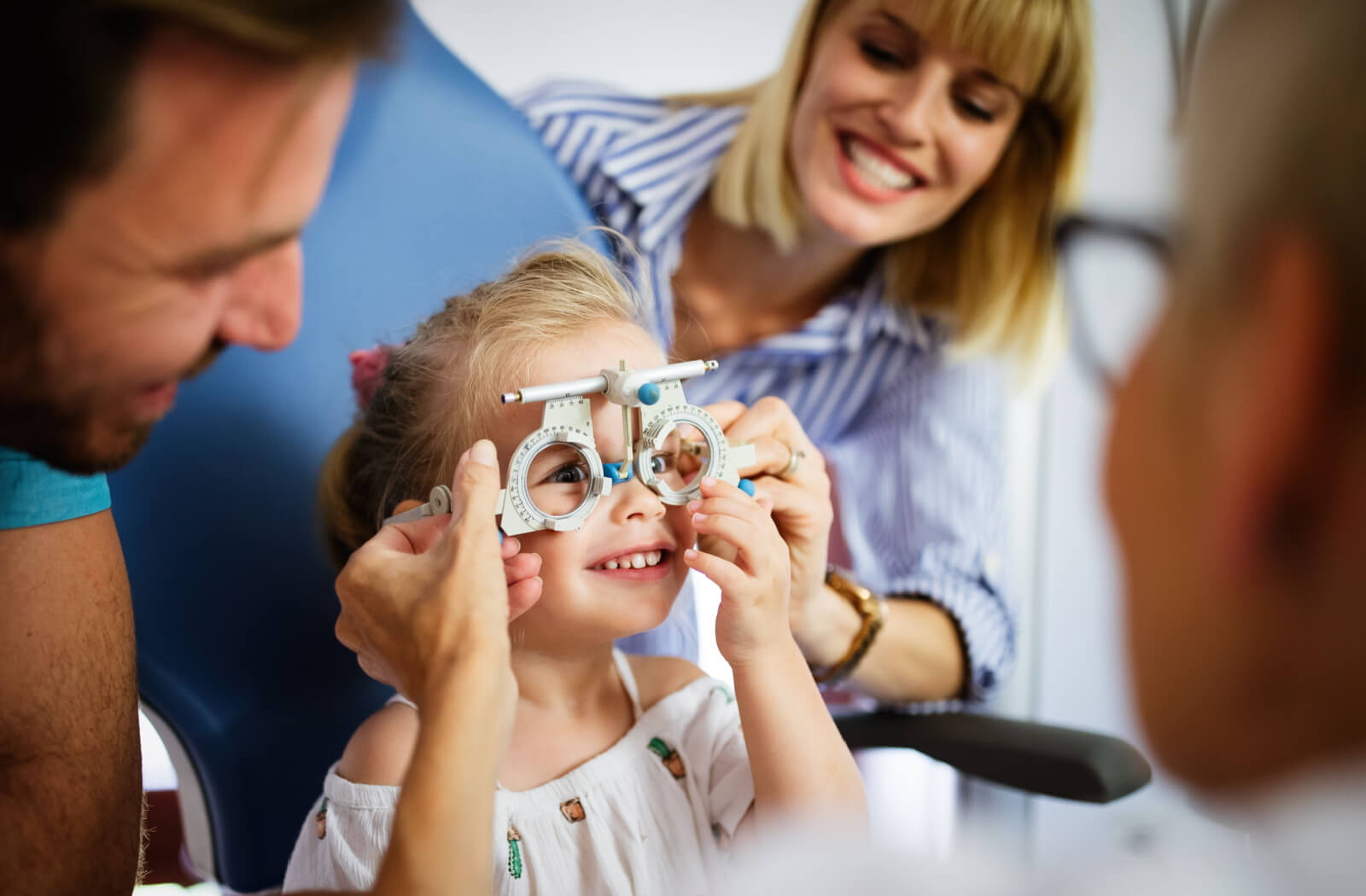Astigmatism and myopia affect millions of Americans, typically from a young age. These conditions can make it harder to see, affecting your quality of life. With the effect of these refractive errors on vision, many people wonder how to prevent astigmatism and myopia.
Although you can’t prevent astigmatism from developing, the likelihood of myopia developing can be reduced by being exposed outdoors to daylight, while looking far away, as opposed to being stuck indoors looking at near objects. With myopia, in particular, specialized treatments can slow the worsening of this condition in children. The blurred vision caused by both of these conditions can be treated with prescription eyeglasses and contact lenses from your eye doctor.
What is Astigmatism?
Astigmatism is a common refractive error where your cornea or lens is irregularly shaped, causing blurry vision. This condition can lead to several symptoms that affect your daily life, including blurred vision, headaches, and discomfort. Unlike other refractive errors, astigmatism causes blurry vision from all distances and can present alongside hyperopia or myopia.
Astigmatism is typically present from birth, but other factors can affect one’s risk, including:
- Genetics
- Keratoconus
- Eye Injury
- Eye Surgery
What Causes Astigmatism?
Astigmatism occurs due to an irregularly-shaped eye. Either the eye’s cornea or lens is shaped like a football, affecting how light enters the eye.
The cornea and lens are typically round, helping bend light as it enters the eye to land at one point on the retina, creating the clear images you see. With astigmatism, the entering light doesn’t refract correctly. Light rays are focused at two different points, which cannot both land on the retina at the same time, causing blurry vision and glare.
What is Myopia?
Myopia is an eye condition in which the shape of the eye causes blurry vision at far distances, while near images appear clear. Approximately 42% of Americans have myopia, but this number has been steadily increasing over the years. This condition typically develops in childhood and progresses until adulthood.
There are several symptoms of myopia, including:
- Headaches
- Eye Strain
- Frequently Squinting to See
- Difficulty Seeing Faraway Objects
Myopia can progress as one grows, making regular eye exams essential for children. This condition can worsen with time, leading to poor vision and, in more severe cases, an increased risk of eye disease.
This condition, known as high myopia, increases your risk of several eye conditions, including:
What Causes Myopia?
Myopia results from an abnormally-shaped eye that has grown too quickly or continued to grow, causing the eye to be too long or too curved at its front surface. Because of the eye’s shape, the light gets focused short of reaching the back of the eye, causing blurry vision.
Other factors can increase a child’s risk of developing myopia, including:

Can You Prevent Astigmatism and Myopia?
Unfortunately, there isn’t a way to prevent astigmatism from developing, which is determined by one’s own genetics.
Myopia is similar because there is a genetic component, but there are also environmental factors that you can control. Specifically, be outdoors in daylight more at least 2 – 3 hours per day, while looking far away, as opposed to indoors doing near work. Your eye doctor can help to correct your vision and slow myopia progression in children.
Treating Astigmatism
While you can’t cure astigmatism, your eye doctor can help improve your vision. Astigmatism is treatable with glasses, contacts, or refractive surgery.
Eyeglasses can help improve how light bends as it enters your eye. Contact lenses work the same, but astigmatism typically requires specialized lenses called toric lenses. These lenses are specially designed for your eyes, providing clear and comfortable vision.
For patients who want clear vision without corrective lenses, refractive surgery can help. While your optometrist may not perform your surgery, they can determine your eligibility, satisfy all of the preliminary testing requirements, and refer you to a trusted surgeon.
TREATING MYOPIA
Similar to astigmatism, you can correct myopia with glasses, contacts, or refractive surgery. However, these treatments can’t prevent myopia from worsening in children. Your optometrist must use specialized treatments to slow the progression of myopia.
Your eye doctor has several treatments available to help treat myopia progression:
- Specialized Therapeutic Contact Lenses: These specialized soft contact lenses, such as the FDA-approved MiSight dual-focus lenses and multifocal lenses, which deliberately focus light rays in front of the peripheral retina, very effectively address myopia progression. As a matter of fact, MiSight lenses have been shown to slow increases in eyeglass prescription by 59% and eye axial length elongation by 52%.
- Orthokeratology: Orthokeratology (Ortho-K) rigid contact lenses help to slow myopia progression by gently reshaping the cornea overnight while you sleep, providing clear vision without corrective lenses during the daytime.
- Low-Concentration Atropine Eye Drops: Atropine eye drops, traditionally used to dilate your pupils, have been shown to slow myopia progression by a different mechanism of action and are recommended for kids who are either too young to handle contact lenses, showing fast progression at an earlier age, or when other treatment options are not as effective.
- Peripheral Defocus Spectacle Lenses: Peripheral defocus lenses can help significantly slow myopic progression while correcting vision. The lens center provides clear distance vision while surrounding treatment zones in the periphery focus light in front of the retina, which has been shown to slow myopia progression. MiyoSmart and Stellest lenses, although not yet available in the USA, can both slow myopia by over 50% with their unique patented technologies.
- Bifocal & Progressive Spectacle Lenses: Bifocals and progressive lenses, although the least effective out of all of the other treatment options, can also help to slow myopia progression by their design. They feature multiple prescriptions in a single lens.
Take Care of Your Vision
Whether you have myopia, astigmatism, or both, your eye doctor can help manage refractive errors. They can recommend ways to treat these conditions and improve your vision. If your child has myopia, they can help prevent it from worsening.
Contact Eye Love Optometry if you or a loved one has symptoms of myopia or astigmatism.
















